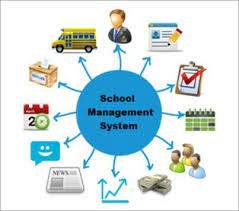How to Build a School Management Software: Steps, Features, Benefits, and Costs
How to Build a School Management Software: Steps, Features, Benefits, and Costs

Running a school smoothly requires more than just skilled teachers and motivated students. It takes efficient systems to manage daily operations—from admissions and attendance to exams and communication. That’s where School Management Software comes in.
If you're considering building a custom system or want to understand how one works, this guide will walk you through the steps, must-have features, benefits, and costs involved. Let’s dive in!
What is School Management Software?
School Management Software is a digital platform designed to streamline and automate school operations. It helps schools handle tasks like student admissions, fee management, timetable scheduling, and parent-teacher communication—all in one place.
These systems are used by school administrators, teachers, students, and parents to stay connected and informed at all times.
Read more here
Why Build a Custom School Management Software?
There are many ready-to-use systems available, but building custom software gives you:
-
Full control over features
-
A system tailored to your specific needs
-
Greater flexibility and scalability
If you have a growing school or unique operational needs, custom development is a smart investment.
Key Steps to Build a School Management Software
Building a custom solution involves several key steps. Here’s a simple breakdown:
1. Define Your Objectives
Start with a clear understanding of what you want the software to do. List all the essential functions like admissions, attendance tracking, and report generation.
2. Conduct Market Research
Look at popular School Management Software solutions. Analyze their strengths and weaknesses. This will help you plan better features for your own system.
3. Choose the Right Development Team
Select an experienced development company that understands the education sector. This ensures a smoother build and better user experience.
4. Design a User-Friendly Interface
The software should be easy for all users—teachers, students, and parents. A clean and intuitive interface is essential.
5. Develop Core Features
Start developing the essential modules. Ensure the software works well across devices and platforms.
6. Test Rigorously
Thorough testing helps eliminate bugs and ensures the software performs well under different conditions.
7. Launch and Gather Feedback
Once live, gather feedback from users to improve the system. Updates and improvements should be ongoing.
Must-Have Features of a School Management Software
A good School Management Software should include:
Student Information System (SIS)
Maintain detailed records of each student, including grades, attendance, and behavior history.
Attendance Management
Allow teachers to mark and track attendance easily, with auto-alerts to parents if a student is absent.
Fee Management
Automate fee collection, issue receipts, and send reminders for due payments.
Timetable Scheduling
Simplify class scheduling, room assignments, and teacher allocations.
Communication Tools
Enable smooth communication between teachers, parents, and students through messages and alerts.
Examination and Result Management
Create exams, assign marks, and publish report cards with minimal effort.
Parent and Student Portals
Provide separate logins for parents and students to track performance, attendance, and updates.
Benefits of Using School Management Software
The advantages of using such a system are significant:
1. Saves Time and Reduces Manual Work
Automated tasks like attendance and fee tracking save hours of work each week.
2. Increases Accuracy
Minimizes errors in student records, grades, and finance-related tasks.
3. Enhances Communication
Keeps parents, students, and staff on the same page through real-time updates and alerts.
4. Better Resource Management
From classrooms to teachers, everything can be managed efficiently with the help of data insights.
5. Boosts Transparency
Parents can monitor their child's performance, fees, and homework anytime, promoting trust.
How Much Does It Cost to Build a School Management Software?
The cost depends on the complexity of the features, design, and the team you hire. Here's a general breakdown:
| Development Phase | Estimated Cost (USD) |
|---|---|
| Basic MVP (Minimum Viable Product) | $5,000 – $10,000 |
| Mid-Level Platform | $15,000 – $30,000 |
| Advanced System with Custom Features | $35,000+ |
Keep in mind that these are rough estimates. Ongoing maintenance and updates will also add to the cost.
To get the most value for your investment, choose a trusted partner like eSchool software. They offer customizable, feature-rich solutions that are affordable and scalable.
Real Reviews: What Users Say About eSchool Software
Here are some genuine user reviews for eSchool software:
Principal Ayesha R.
"eSchool made everything from admissions to report cards much easier for our staff. The interface is user-friendly and the support team is amazing."
Teacher Salman K.
"The attendance module and parent communication features have saved me so much time. Highly recommend!"
Parent Zainab M.
"I love how I can track my child’s progress and fees in one place. Very helpful and easy to use."
Final Thoughts: Why eSchool is Your Best Bet
If you want a trusted, efficient, and scalable School Management Software, look no further than eSchool. Whether you're a school administrator or part of the teaching staff, their system will help you manage tasks with ease.
From intuitive design to powerful features, eSchool is built to support schools of all sizes. And if you're considering building your own solution, we strongly recommend reaching out to their team for expert guidance.
About the Author
Rabia is a professional content writer with a passion for educational technology and digital transformation in schools. With years of experience in writing for EdTech platforms, Rabia aims to simplify complex software solutions for everyday users. In this blog, she shares actionable insights into building efficient School Management Software that works for everyone—from teachers and students to parents and administrators.
What's Your Reaction?















.jpg)
.jpg)


